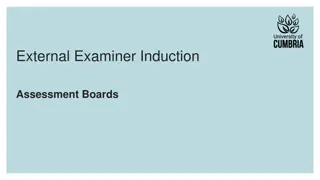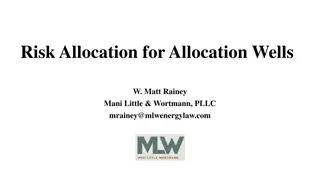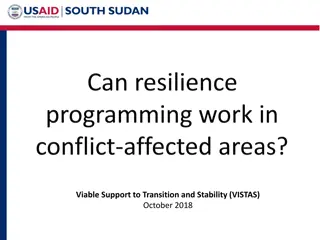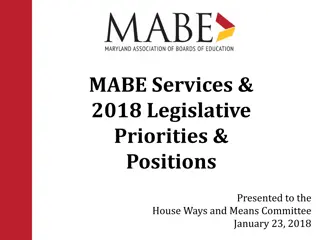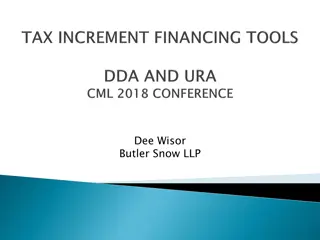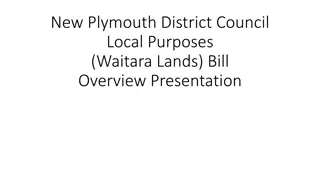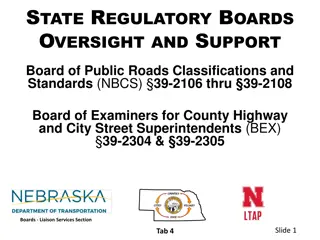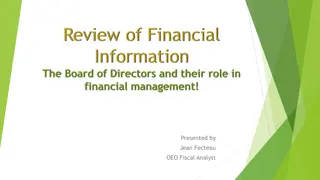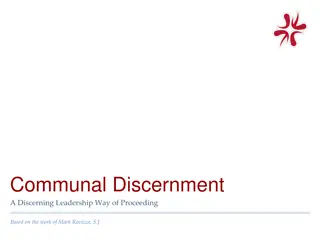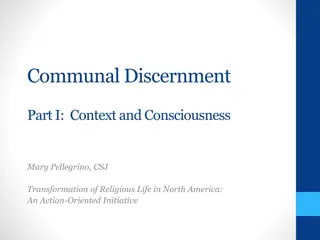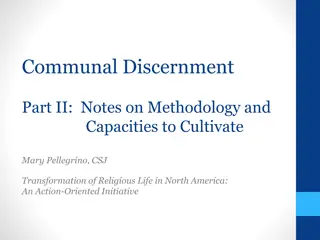Challenges in Land Allocation and Administration by Traditional Authorities and Communal Land Boards
The Communal Land Reform Act of 2002 introduced Communal Land Boards to assist Traditional Authorities in land administration. However, challenges such as misconceptions of powers, limited technical capacity, inadequate resources, and unclear procedures have hindered smooth registration and resolution of disputes. These challenges have affected land development and led to appeals against decisions made by both authorities.
Download Presentation

Please find below an Image/Link to download the presentation.
The content on the website is provided AS IS for your information and personal use only. It may not be sold, licensed, or shared on other websites without obtaining consent from the author. Download presentation by click this link. If you encounter any issues during the download, it is possible that the publisher has removed the file from their server.
E N D
Presentation Transcript
CHALLENGES IN LAND ALLOCATION, ADMINISTRATION BY THE TRADITIONAL AUTHORITIES AND COMMUNAL LAND BOARDS AND THE DEVELOMENT OF COMMUNAL AREAS 2ndLand Conference 2018 By: Ms. Maria Kasita
Background Before the Communal Land Reform Act, Act No. 5 of 2002 (CLRA) Traditional Authorities (TAs) were solely responsible for land allocation, cancellation and administration of communal land TA s also administered the Permission to Occupy (PTO) now converted to Leasehold The Act establish Communal Land Boards (CLB) to assist the TA s in land administration & management. This all came from Resolution 18 of the 1991 Land Conference, which states TA continue allocation of communal lands and CLBs to be administrators
Background Cont... The CLRA did not abolish the role of the TA but they have to work alongside the CLB with clearly defined powers & functions. The TAs allocate & cancel Customary Land Rights which the CLBs have to ratify. CLBs consider & cancel Leaseholds and TAs have to consent Both have powers to remove illegal fences Their decisions can be appealed against by any aggrieved party to the Minister
Challenges in Land Allocation & Land Administration The main challenges that have affected smooth registration & resolving of disputes are: Misconception of the powers between TAs and CLBs TAs allocating or cancelling leasehold Limited technical capacity of both Inability to interpret the CLRA correctly Traditional Authorities area of jurisdiction Registration can t progress, land development is halted Unrecognized TAs discourage their subjects to register
Challenges cont. Inability to remove illegal fences Who should remove illegal fences, TA or CLB Procedures not clear on how to cause removal Lack of adequate resources for both TAs and CLBs (logistics and financial) TAs lack even stationeries to keep records of allocations and decisions No financial allocation for land function by TAs CLB budget not adequate for the huge task Lack of in-depth knowledge of the CLRA) Decisions of both are often appealed against
Misconceptions of powers lead to appeals Region No. of Appeals 2012 2013 2014 2015 201 6 4 201 7 0 Kavango West) Ohangwena (East & 5 6 8 4 3 6 2 4 6 2 Omaheke 5 6 6 1 11 2 Omusati 1 2 6 6 5 3 Otjozondjupa 0 12 16 4 1 1 Zambezi 3 9 17 4 10 2 Total 17 41 57 23 37 10
Lack of technical capacity of CLBs At the beginning CLBs lack knowledge of the provision of CLRA Training offered at beginning of the CLBs term but too compact and non legal person may not comprehend all in a week Lack trained personnel, ICT equipment, transport Trained personnel supplied by PoN Land management courses, ICT equipments and vehicles provided by MLR and Donors These challenges were address by MLR assisted by donors, though not eliminated
Donors Assistance in CLB Capacity Building Period Institution Assistance Rendered 2004till date GIZ Funding training of Land Board training every three years Logistical support (i.e. vehicles) & NCLAS Advisory function to Communal farmers 2006 Ministry of Land Reform Increased the budget of the division Land Board Tenure & Advise (LBTA) from 3.6million in 2006to 27 million Employed casual registration officer in all the land board served regions The ministry added two staff assigned to assist the Land Boards from one personnel. 2009 2014 Millennium Account (MCA) through Communal Land Support (CLS) Challenge Focused on investigation, verification & registration of communal land rights in the 6 region of operation Broad based campaign to create awareness about provisions of the Act. Facilitated the provision of group rights for the commonage Compile some communication materials 2005- 2011 Rural Poverty Reduction Program (PRP) Assisted Communal Land Registration by providing aerial photographs and the development of Namibian Communal Land Administrative System (NCLAS) Development a registration road map with its budget 2013till date Basket Fund Development of Programme for Communal Land Development (PCLD) focusing of infrastructure development Developed a comprehensive communication strategy Contributed to capacity co- funded the mobile registration team Logistical support (vehicles, ICT equipments camping gears ect.)
Challenges to remove illegal fences Section 18 of the CLRA prohibit erection of new fences without authorization Section 44 criminalized the erection of fences without permission or retention of a fence after its recognition is denied These provisions had not help the situation; Unclear procedure to remove fences Order to remove illegal fences contested Difficulties to distinguish new and old as recognitions of existing land right took long
Illegal fences Illegal fencing is prevalent in some regions and in some not existing at all In regions such as Karas, Hardap, Erongo and Zambezi The document states only regions where high cases of illegal fences were reported
Regions High Incidences of Illegal Fences Region No. of Illegal Fences 2012 2013 7 15 45 31 4 12 14 8 4 4 11 6 85 76 2014 14 17 21 11 5 37 105 2015 0 14 11 9 3 4 41 Kavango (East & West) Ohangwena Omaheke Omusati Oshikoto Otjozondjupa Total
Nature of TAs Set Up Hamper Progress Issues of jurisdiction Lack of understanding of the provisions of the CLRA leading to unclear roles and functions Unrecognized TAs Lack of stationeries No record management systems No budget for land matters No transportation
Financial challenges The CLBs started with a very low budget of about 2.6 million in 2006/2007 MLR continue to increase budgetary allocation as illustrate in the table Only when that of the donor increased though the Basket Fund that MLR budget decreased
Budget Allocation to CLB by MLR Financial Year 2011/2012 2012/2013 2013/2014 2014/2015 2015/2016 Amount (N$) 23,755 million 27,364 million 23,260 million 5,035 million 10,106 million
Conclusion The Ministry of Land Reform has since the operation of the CLRA sought to address the challenges as outlined above by increasing budget allocation And solicit funds from donors to address challenges as all require financial resources. Yet, funds are not sufficient to meet all needs to make Namibian Communal Land Development a case in point Money is just a means and not an end in itself Land remains a complex issue requiring multi- sectoral approach and cooperation of all stakeholders involved in land allocation & administration. till all stakeholder come on board, challenges remain


![Key Stakeholder Issues on PDAL Bill [B8 2021] 24 October 2023](/thumb/88726/key-stakeholder-issues-on-pdal-bill-b8-2021-24-october-2023.jpg)





